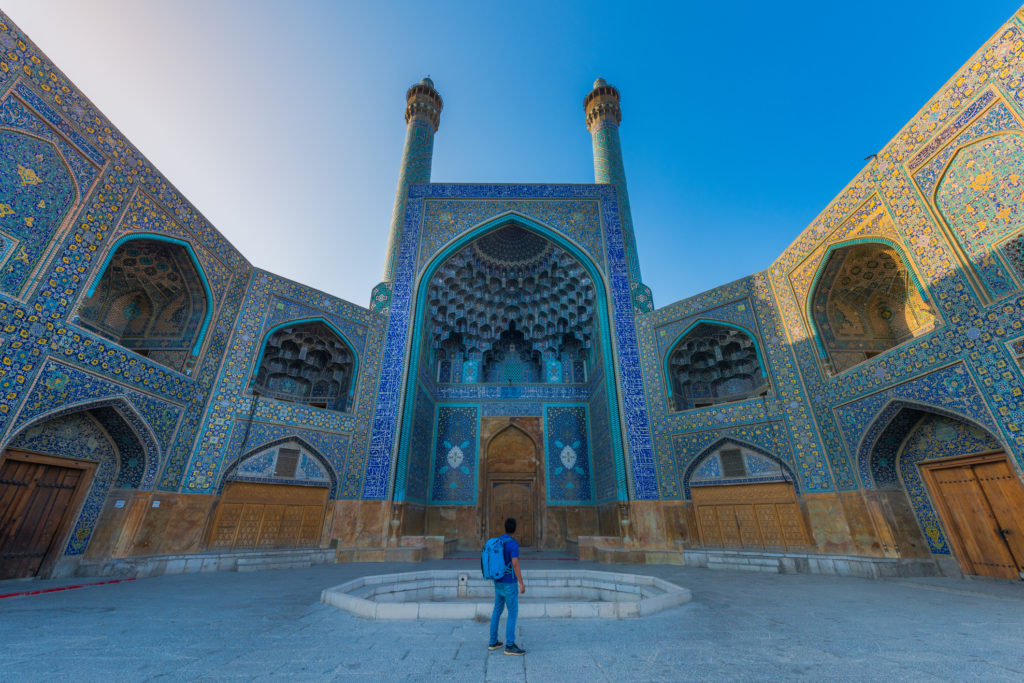Tales and myths of lost civilizations have been told since the dawn of time. The most famous is the story of Atlantis: a quasi-mythical city that sunk beneath the waters of the Atlantic Ocean. Whether the story is true or not, it fills people with intrigue.
Today, archaeologists have discovered there are many sunken cities around the globe. Underwater excavations are difficult and expensive, so these investigations have only recently revealed many lost civilizations.
Around the planet, there are many not so mythical cities found underwater. Some can be traced back through history, yet many remain mysterious and continue to spark people’s imagination as candidates for lost civilizations.
Here are 8 underwater cities of lost civilizations you may not have heard of:
1) Ancient Greece: the sunken city of Pavlopetri.
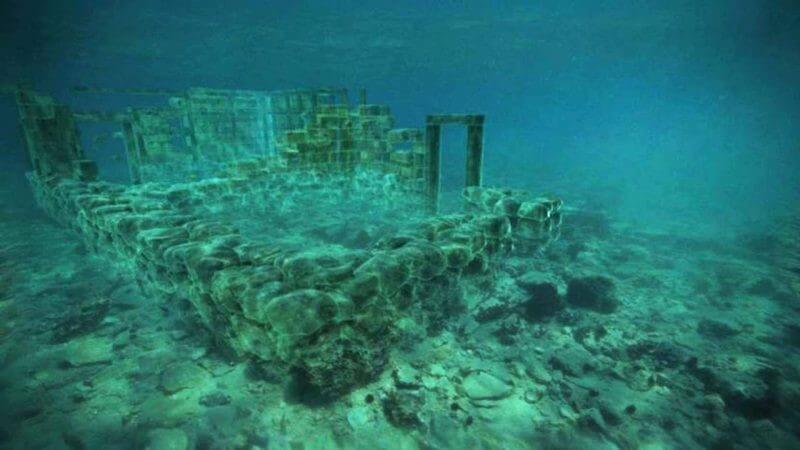
The underwater city of Pavlopetri in Greece. Source
Found in the south of modern-day Greece is the sunken city of Pavlopetri. Dating back 5000 years it is now more than four meters underwater and is the first lost city to be found around Greece. It is thought to have sunk around 1000BC due to an earthquake that shifted the land around many of the Greek islands.
From what has been so far uncovered at the site, the ancient cities layout resembles many modern-day cities. Well-designed roads, houses, gardens, temples, complex water management systems, and huge buildings have so far been found.
The entire city is so far known to be at least 80,000 square meters in size, with a vast open plaza in the center of these sunken ruins
2) Yonaguni Jima, The Japanese Atlantis.

The sunken ruins of a lost civilization in Yonaguni in Japan. Source
The Island of Yonaguni is just miles away from Taiwan and is the last of the Ryukyu islands. It is the westernmost inhabited Japanese island. During the ice age, Yonaguni Island was part of the Chinese mainland. Then due to rising oceans and land shifts, it became one of the many islands that were spread out in between China and Japan. It was once part of the Ryukyu Kingdom until it was overtaken by Japan.
Although these ruins have never been properly researched, many claims are surrounding its origins and dating. These vary from between 10,000 to 5,000 years old. Controversy surrounds the validity of the sunken city, which according to some researchers, was once home to the legendary Jomon civilization that flourished in ancient Japan from around 12,000 to 300BC. It was this civilization that has some of the oldest found forms of pottery.
Regardless of their validity, the ruins have been submerged for at least two thousand years, meaning whatever was once there, would be extremely degraded.
Some geologists argue the formations found at Yonaguni Jima are naturally occurring. They comprise of many 90-degree angles that appear as manmade steps and passageways, as well as a few circular holes carved in stones around the site.
Although these sorts of formations are found in nature, the high amount in such close proximity has inspired many to investigate the mysterious underwater ruins in search of a lost civilization.
3) The Submerged castle in Lake Van, Turkey.
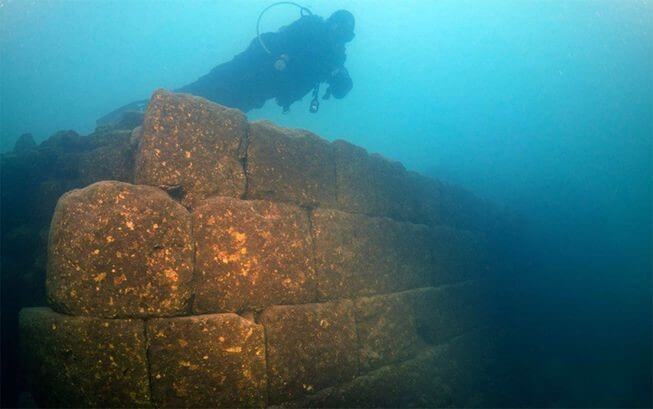
The underwater castle ruins of a lost civilization in Turkey.
Sitting below the waters of the Middle-East’s second largest lake is a 3000-year-old castle. Thought to be the remains of the ancient Urartu civilization, the castle is around a kilometer in length, with walls of up to four meters tall.
This lost civilization once thrived in modern-day Turkey, Iran, and Armenia. Although much of the ruins are under the lake, there are still remnants that can be seen by the lakes edges.
4) Mahabalipuram, India
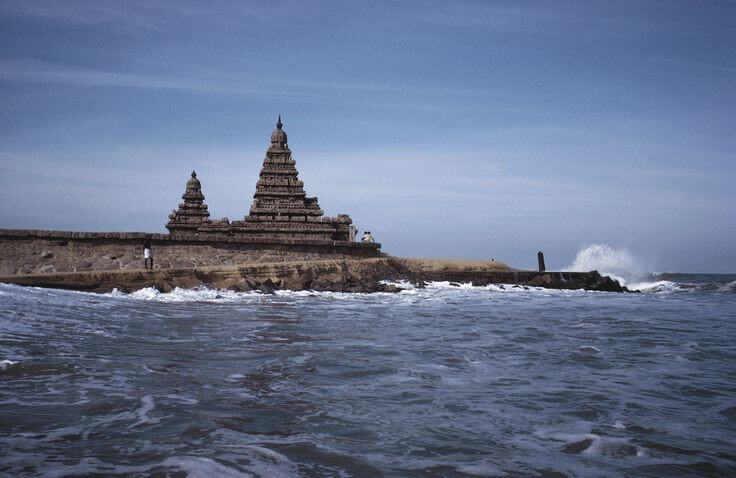
A shore temple of the lost city of Mahabalipuram in India.
The sunken ruins of Mahabalipuram lie between 6-8 meters below the current sea level off the coast of South Eastern India. Local folklore long spoke of the existence of ancient ruins, although was mainly confined to fishermen’s tales and thought of as myth.
However, when a tsunami devastated much of Asia in 2004, it revealed that the stories of the lost civilization were true after all.
As the waters receded around 500 meters before the tsunami hit, they pulled away silt and sand that had built up around the monuments that were until then buried at sea.
Since then, there has been a much more serious attempt in researching these sunken ruins.
5) Heracleion, Egypt. The Lost City of Cleopatra.
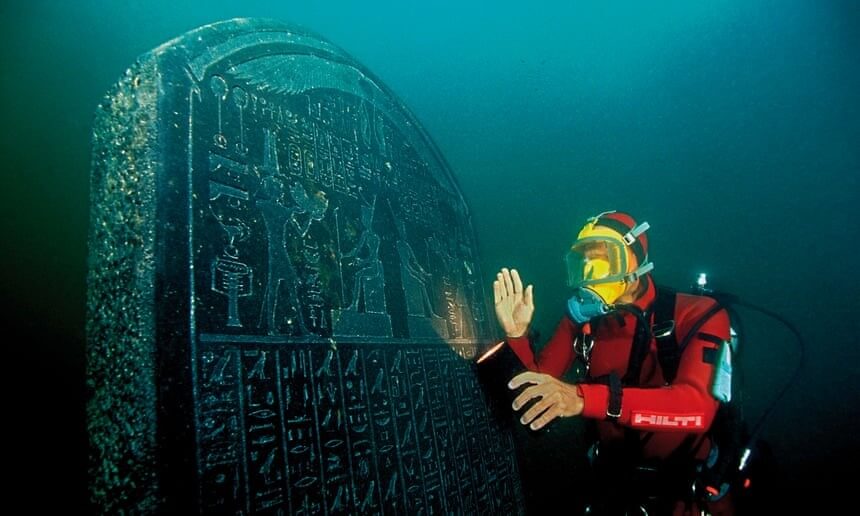
Sunken ruins of the lost city of Heracleion.
Submerged for at least 1600 years, the lost city of Cleopatra has been found off the shores of Alexandria in Egypt. Cleopatra was the last Pharaoh of ancient Egypt, and it was thought that her city was lost to rising seas as a consequence of an earthquake and resulting tidal waves. Pristine statues, and temples have been discovered at the site so far, many of which are in excellent condition.
Statues of Isis, a sphinx, and large red granite columns, as well as foundations of a palace, are among the relics found at the site. Around 20,000 objects have been located in the lost underwater city.
One object recovered from the water is a 2,000-year-old stone figurine of Cleopatra III: a Ptolemaic queen, but depicted as the Egyptian goddess Isis and sculpted in a style that combines both Egyptian and Greek aesthetics.
The findings revealed that Thonis (Egyptian) and Heracleion (Greek) were the same cities.
Cleopatra reigned during the times of the Ptolemaic dynasty, which ruled over Egypt from around 305bc to 30bc.
6) The Sunken City of Olous, Crete.

The island of Crete is bordered by an ancient Sunken Minoan City.
What was once part of the Minoan civilization, Olous is an underwater city that was once home to over 40,000 people. Between the 5th and 2nd century BC, Olous is thought to have reached its peak, making up one of around 100 Minoan cities that thrived around ancient Crete.
Although no one knows exactly what happened to Olous, it is thought that it gradually submerged due to rising sea levels. It is interesting to note that the east coast of Crete is sinking into the sea, while the west coast is rising slowly.
Crete is slowly but surely migrating west. This natural phenomenon started around the 4th century AD and could have been responsible for causing Olous to sink.
7) The Ancient Underwater City in Fuxian Lake, China

Underwater ruins of a lost Chinese Civilization. Source
Fuxian Lake is one of the most intriguing underwater cities ever found. Many stories have emerged from this lake about a lost city dating back thousands of years. There isn’t too much written about the excavations, but what is known is there have been many findings dating back into antiquity.
There are many legends in the Yunnan Province (which is located in southwest China) that talk about sunken cities.
One of the ancient cities that researchers first believed to be at the bottom of the lake was the city of Yuyuan. The city was occupied from around 590-900AD and supposedly sunk to the bottom of the sea.
However, researchers have since concluded that the underwater city could not be that of Yuyuan as all artifacts have so far been made of stone, and not clay, which Yuyuan was almost entirely made from.
In 2001, a team of marine archaeologists decided to explore the lake and reported seeing pyramid-like structures as well as other buildings and stone objects. They claim the ruins are over 2000 years old and belong to the lost civilization known as the Dian Kingdom.
There are many varying stories about these underwater ruins. Further research is required to confirm its origin.
8) Port Royal, Jamaica’s lost city
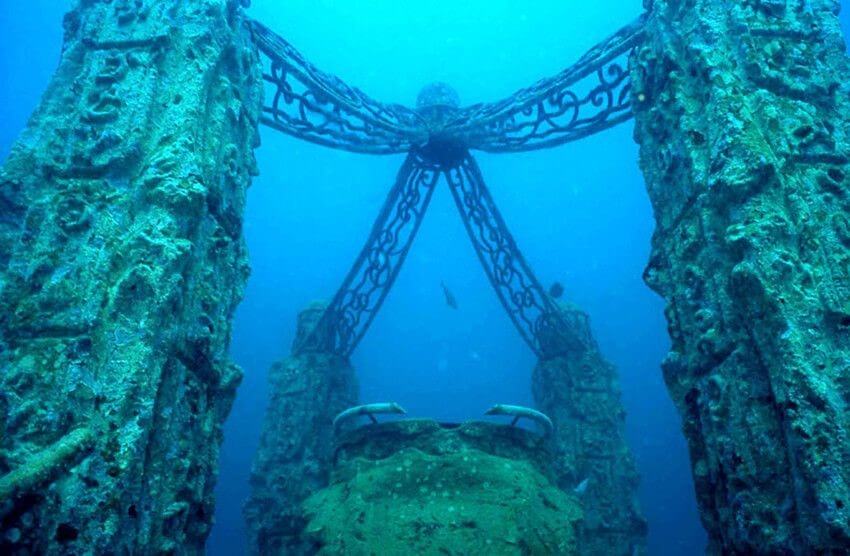
The mysterious sunken ruins of Port Royal in Jamaica.
Up until 1692, Port Royal was one of the most important trading ports of the New World. It wasn’t for the faint-hearted though, with it being known across the world as the ‘wickedest city on earth.’
An earthquake and resulting tsunami brought the Jamaican city to its end, submerging it beneath the sea. The ruins are still accessible today, with travelers able to dive and explore the lost city.
Conclusion:
The human origin story is littered with sunken cities and lost ancient civilizations.
Today underwater archeological research may reveal an entirely new chapter our story.
Now it’s up to you. What lost civilizations and sunken ruins do you believe should be studied more closely?




